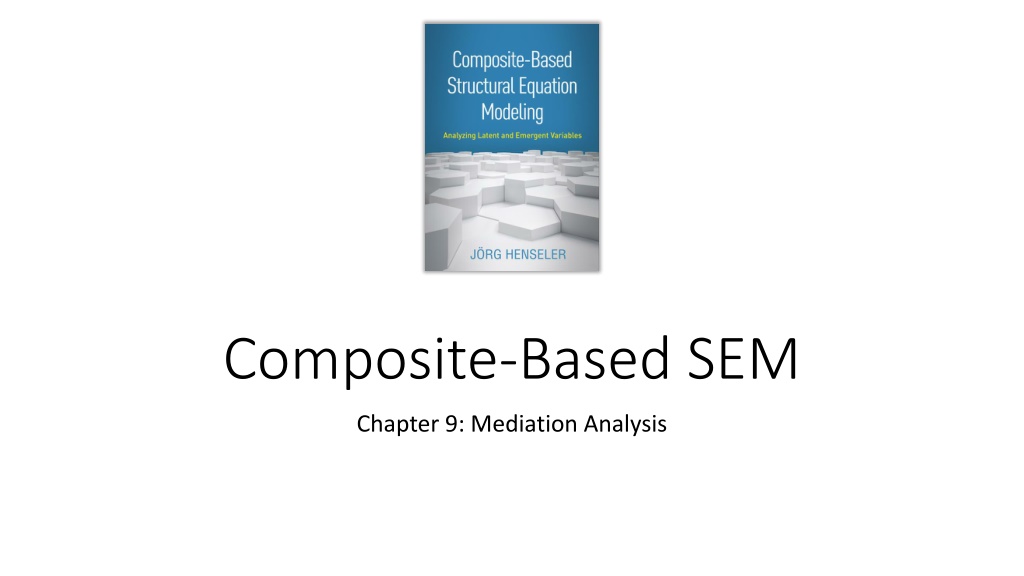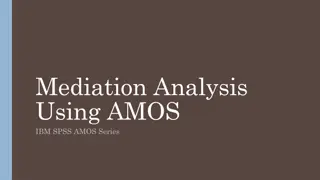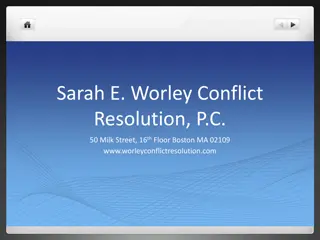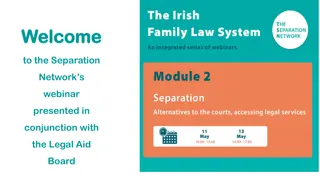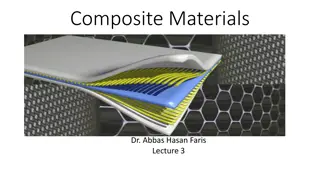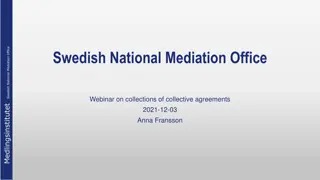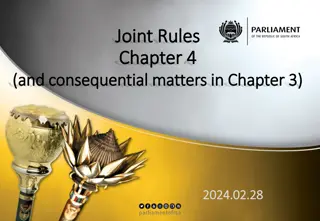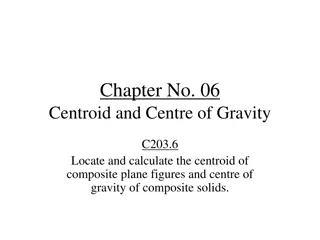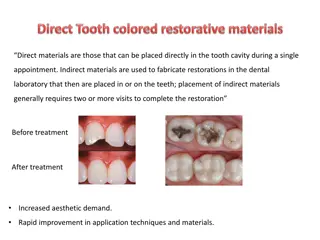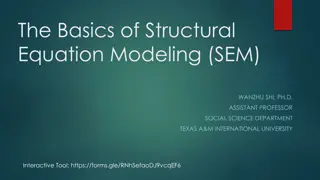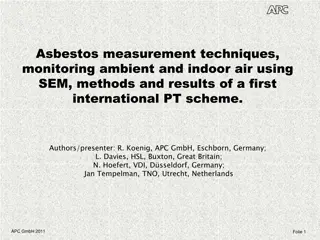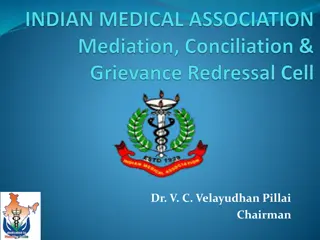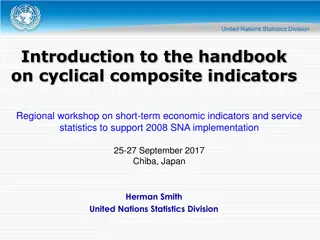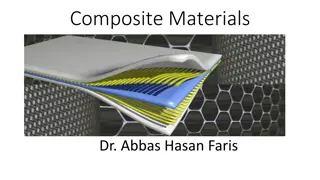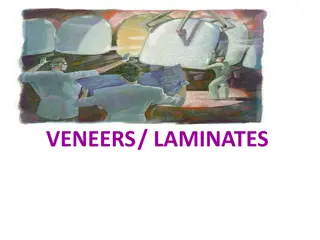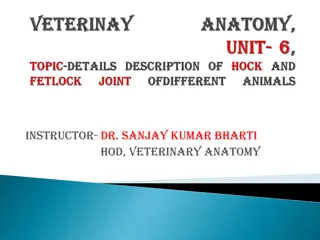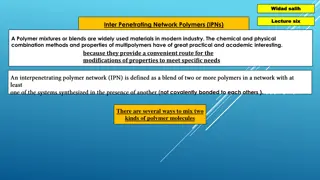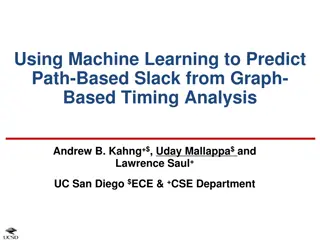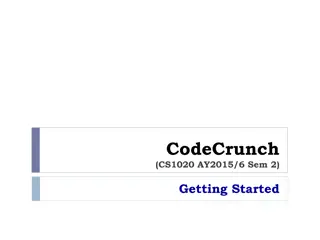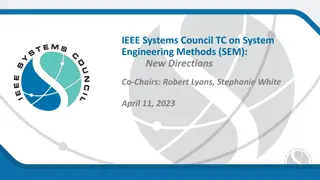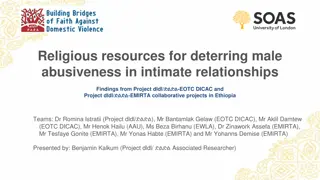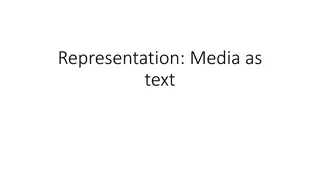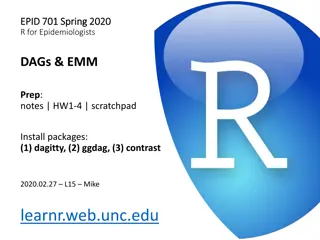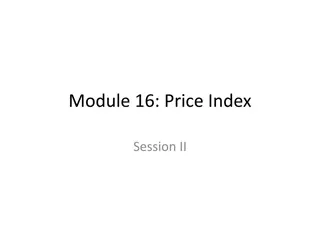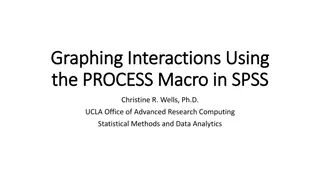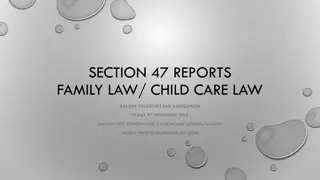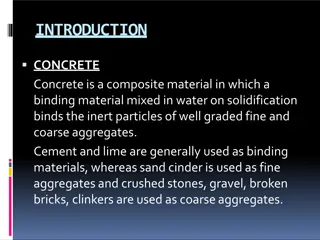Understanding Mediation Analysis in Composite-Based SEM
Exploring the concept of mediation analysis in Composite-Based Structural Equation Modeling (SEM), this content delves into the relationship between variables using examples such as sea temperature and incidents at a Californian beach. It covers the need for mediation analysis, different mediation patterns, and how to determine the relative size of complementary mediating effects. Additionally, it discusses classifying mediation and testing indirect effects, providing valuable insights for researchers and practitioners in the field.
- Mediation Analysis
- Composite-Based SEM
- Relationship Patterns
- Indirect Effects
- Variable Relationships
Download Presentation

Please find below an Image/Link to download the presentation.
The content on the website is provided AS IS for your information and personal use only. It may not be sold, licensed, or shared on other websites without obtaining consent from the author. Download presentation by click this link. If you encounter any issues during the download, it is possible that the publisher has removed the file from their server.
E N D
Presentation Transcript
Composite-Based SEM Chapter 9: Mediation Analysis
Topics The need for mediation analysis Practicing mediation analysis 2
Example Relationship between sea temperature and number of incidents at a Californian beach. + sea # of temperature incidents Conclusion 1: Swimming in warm water is more dangerous than swimming in cold water. 3
Example (contd) Revised relationship between sea temperature and number of incidents at a Californian beach. + + + sea # of # of swimmers temperature incidents Conclusion 2: The warmer the water, the more swimmers. The more swimmers, the more incidents. 4
Classifying Mediation Is a b significant ? Yes No Zhao, Lynch & Chen (2010) Is c Is c significant ? significant ? Yes No Yes No Is a b c positive ? Yes No Complementary (Partial mediation) Competitive (Partial mediation) Indirect-only (Full mediation) Direct-only (No mediation) No effect (No mediation) 6
Testing the Indirect Effect = : 0 H a b Hypothesis: 0 : 0 H a b 1 Parametric tests of the indirect effect fail to account for the fact that if a and b are normally distributed, the indirect effect cannot be normally distributed as well. Solution (Preacher & Hayes, 2008): Bootstrap the indirect effect! 7
Determining the Relative Size of Complementary Mediating Effects Variance Accounted For (Shrout & Bolger, 2002): VAF =Indirect effect total effect= ? ? ? ?+? The VAF can become negative. Interpretation as suppressor effects Set to one. The VAF actually only makes sense for complementary mediation. 9
Bibliography Henseler, J. (2020). Composite-Based Structural Equation Modeling: Analyzing Latent and Emergent Variables, New York: Guilford Press. Preacher, K. J., & Hayes, A. F. (2008). Contemporary approaches to assessing mediation in communication research. In A. F. Hayes, M. D. Slater, & L. B. Snyder (Eds.), The Sage Sourcebook of Advanced Data Analysis Methods for Communication Research. Thousand Oaks, CA: Sage, pp. 13 54. Shrout, P. E., & Bolger, N. (2002). Mediation in experimental and nonexperimental studies: New procedures and recommendations. Psychological Methods, 7(4), 422 445 Zhao, X., Lynch, J. G., & Chen, Q. (2010). Reconsidering Baron and Kenny: Myths and truths about mediation analysis. Journal of Consumer Research, 37(2), 197 206. 10
